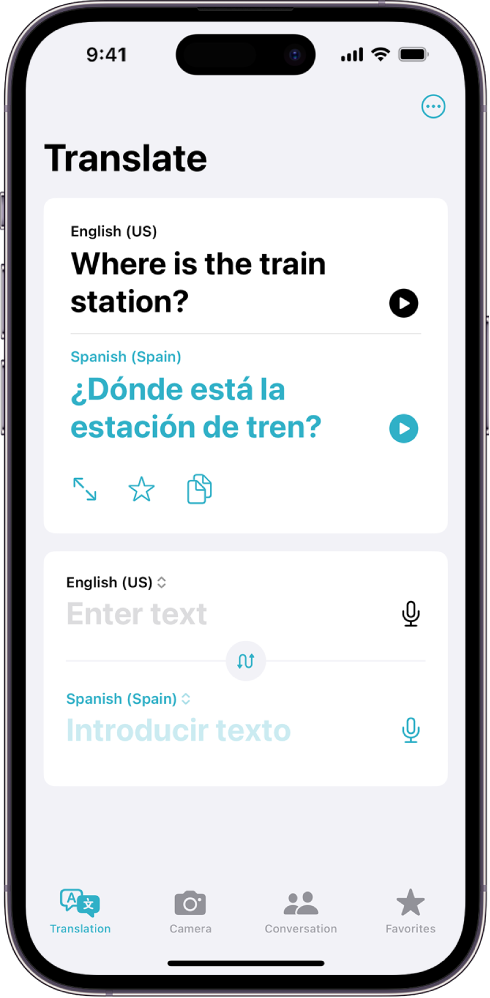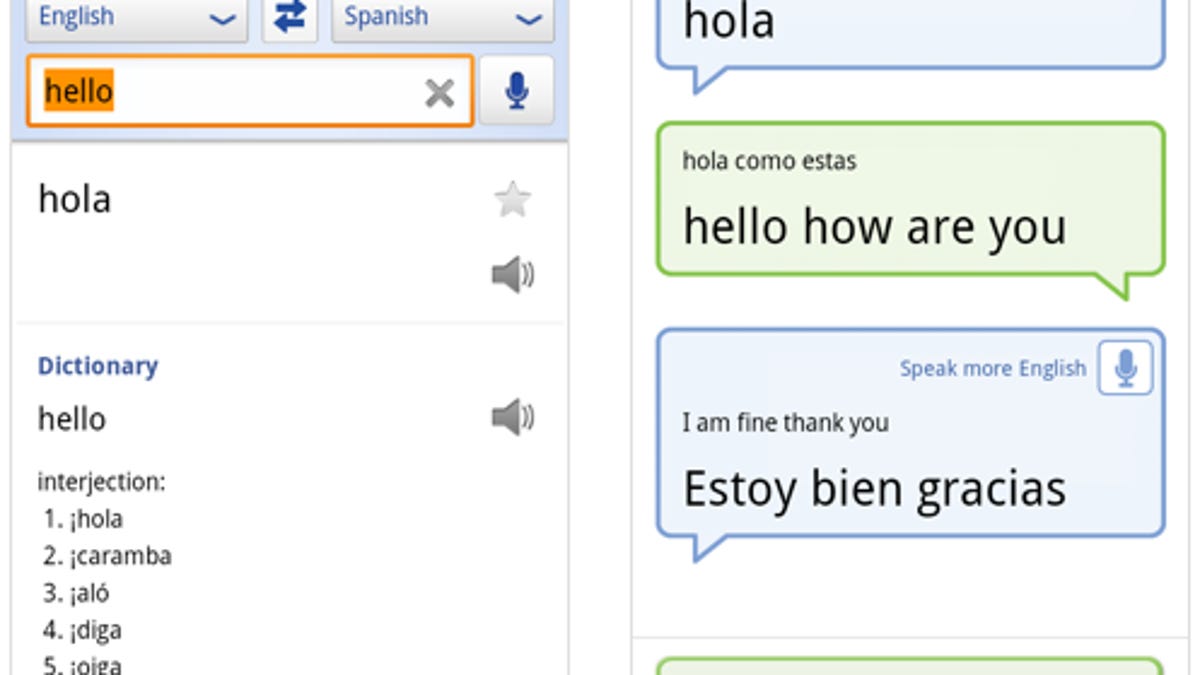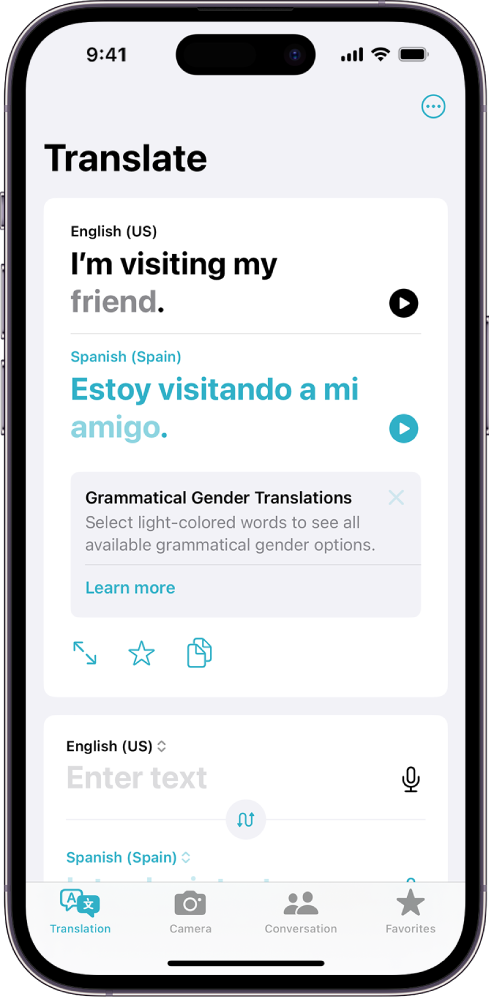Topic translate update to spanish: Discover the nuances of translating "update" to Spanish, enhancing communication across digital and personal spheres with precision and cultural insight.
Table of Content
- What is the Spanish translation for update?
- Understanding \"Update\" in Spanish Contexts
- How to Use \"Actualizar\" for Technology and Software
- Differentiating \"Poner al día\" for Informal Updates
- \"Informar\" and \"Notificar\": Formal Update Translations
- Examples and Usage in Real-Life Scenarios
- Grammar and Conjugation Tips for \"Update\" in Spanish
- YOUTUBE: Guide to Using Google Translate App for English to Spanish Translation
- Common Phrases and Expressions with \"Update\"
- Using \"Update\" in Business and Professional Communications
- Regional Variations and Understanding Local Usage
- Tools and Resources for Accurate Translation
What is the Spanish translation for update?
The Spanish translation for \"update\" is \"actualización\".

READ MORE:
Understanding \"Update\" in Spanish Contexts
Translating \"update\" into Spanish can vary depending on the context, reflecting different aspects of changes, improvements, or information sharing. Knowing when to use the appropriate terms ensures effective communication in various scenarios.
- Actualizar: Primarily used for technology, software, and updating information. It implies making something current or bringing it up to date.
- Poner al día: Often used in informal contexts to mean catching up or informing someone about the latest developments.
- Renovar: Indicates renewing or refreshing something more generally, not limited to digital contexts.
Choosing the right term depends on understanding the nuances of each situation. \"Actualizar\" is your go-to for technical updates, while \"poner al día\" fits casual conversations. Recognizing these distinctions enhances clarity and effectiveness in communication.

How to Use \"Actualizar\" for Technology and Software
The Spanish verb \"actualizar\" is frequently used in the context of technology and software, indicating the process of updating or upgrading to the latest version. Understanding its application can significantly improve tech-related communication.
- Checking for Updates: Begin by checking for available updates. In Spanish, you might say, \"Verificar si hay actualizaciones disponibles.\"
- Initiating an Update: To start an update, use the command \"Iniciar la actualización\" or \"Actualizar software.\"
- Automatic Updates: Discussing automatic updates, mention \"actualizaciones automáticas\" to indicate the software updates itself without manual intervention.
- Updating Apps: For app updates, \"Actualizar aplicaciones\" is the specific phrase that\"s used, often found in the context of smartphones and tablets.
- Software Upgrade: When referring to a significant upgrade, \"Actualizar el sistema\" or \"Realizar una actualización mayor\" are suitable phrases.
Using \"actualizar\" correctly in these contexts ensures clear communication about tech maintenance and upgrades, making it a crucial term for anyone dealing with Spanish-language technology environments.

Differentiating \"Poner al día\" for Informal Updates
The expression \"poner al día\" translates to bringing someone up to date in a less formal or more personal context. It\"s about sharing news, personal developments, or informal updates that might not involve technology directly.
- Catching Up with Friends: Use \"poner al día\" when catching up with friends or family. For instance, \"Vamos a ponernos al día\" means \"Let\"s catch up.\"
- Informal Work Meetings: In less formal work environments or meetings, saying \"Vamos a poner al día la situación\" can be a way to discuss updates or changes.
- Sharing Personal News: When sharing personal news or life updates, \"poner al día\" is a warm, friendly way to communicate these moments.
This expression emphasizes the importance of personal connection and shared experiences, making it perfect for conversations that are more about human interaction than technical details.

\"Informar\" and \"Notificar\": Formal Update Translations
In formal contexts, \"informar\" and \"notificar\" are the preferred verbs for communicating updates, each with its own nuances. Understanding their appropriate use is key in professional and official communications.
- Informar: Used to convey providing detailed information or reporting on a situation. For example, \"Informar sobre los avances del proyecto\" means \"To report on the project\"s progress.\"
- Notificar: Implies officially announcing or notifying someone of a decision, change, or update. \"Notificar cambios en la política\" translates to \"Notify changes in policy.\"
Choosing between \"informar\" and \"notificar\" depends on the context and the nature of the update. \"Informar\" is more about giving detailed information, while \"notificar\" is used for formal announcements.

_HOOK_
Examples and Usage in Real-Life Scenarios
Applying the correct Spanish translation for \"update\" enhances understanding and clarity in various situations. Here are examples demonstrating how to use update-related terms in real-life scenarios.
- Actualizar in Technology: \"He actualizado el software de mi computadora para mejorar el rendimiento.\" (I have updated my computer\"s software to improve performance.)
- Poner al día in Casual Conversations: \"Déjame ponerte al día sobre lo que pasó en la reunión.\" (Let me catch you up on what happened in the meeting.)
- Informar in Formal Reports: \"El gerente informará sobre el estado actual del proyecto en la próxima reunión.\" (The manager will report on the current state of the project at the next meeting.)
- Notificar in Official Announcements: \"La universidad notificará a los estudiantes sobre los cambios en el calendario académico.\" (The university will notify students about changes in the academic calendar.)
These examples show how different contexts and nuances influence the choice of words when translating \"update\" into Spanish, ensuring effective and appropriate communication.

Grammar and Conjugation Tips for \"Update\" in Spanish
Mastering the conjugation and grammatical use of \"update\" related verbs in Spanish is crucial for effective communication. Here are tips to help you navigate these aspects accurately.
- Conjugating \"Actualizar\": It follows regular -ar verb conjugation patterns. For instance, \"yo actualizo\" (I update), \"tú actualizas\" (you update), \"él/ella actualiza\" (he/she updates).
- Using \"Poner al día\": Being a phrase, its conjugation depends on \"poner\". For example, \"yo pongo al día\" (I bring up to date), \"nosotros ponemos al día\" (we bring up to date).
- Reflexive Use: Some updates are reflexive, indicating the subject is updating themselves or something closely related, e.g., \"me actualizo en las noticias\" (I update myself on the news).
- Preterite vs. Imperfect: Use the preterite tense for updates that occurred at a specific time (\"actualicé mi teléfono ayer\" - I updated my phone yesterday) and the imperfect for habitual or ongoing updates in the past (\"actualizaba mi blog semanalmente\" - I used to update my blog weekly).
- Subjunctive Mood: When expressing wishes, doubts, or hypotheticals about updates, use the subjunctive mood. For example, \"Espero que actualices tu CV\" (I hope that you update your CV).
Understanding these grammatical nuances ensures that your use of \"update\" in Spanish is both accurate and contextually appropriate.

Guide to Using Google Translate App for English to Spanish Translation
\"Discover the incredible world of language translation with Google Translate! Watch our video to see how this powerful tool seamlessly converts words and phrases into any language, making communication across cultures effortlessly simple.\"
ili Now Offers Spanish Translation for Your Words
\"Say goodbye to language barriers with ili! Our video showcases the amazing features of this portable translator, enabling you to communicate smoothly and confidently while traveling abroad. See it in action and unlock a world of possibilities!\"
Common Phrases and Expressions with \"Update\"
Integrating \"update\" into your Spanish vocabulary can be seamless with the use of common phrases and expressions. Here are some widely used ones that can enhance your communication in various contexts.
- ¿Has actualizado el software? - Have you updated the software?
- Necesitamos poner al día nuestros registros. - We need to update our records.
- Informaré de cualquier novedad. - I will report any news.
- La aplicación se actualiza automáticamente. - The app updates automatically.
- ¿Puedes notificarme cuando actualicen la información? - Can you notify me when the information is updated?
These phrases provide a practical foundation for discussing updates in technology, business, and daily life, making your Spanish conversations more effective and contextually rich.

Using \"Update\" in Business and Professional Communications
In business and professional settings, conveying updates accurately and effectively is crucial. Whether it\"s about project progress, policy changes, or system upgrades, using the appropriate Spanish terms can enhance clarity and professionalism.
- Project Updates: \"Actualizar el estado del proyecto\" - Update the project status. This phrase is essential for keeping team members informed about project developments.
- Policy Changes: \"Notificar cambios en la política\" - Notify about policy changes. It\"s vital for ensuring all employees are aware of new policies.
- System Upgrades: \"Informar sobre las actualizaciones del sistema\" - Report on system updates. This is crucial for IT departments to communicate with users about software and hardware upgrades.
- Meeting Summaries: \"Poner al día sobre los puntos discutidos en la reunión\" - Catch up on the points discussed in the meeting. Useful for recapping meetings and ensuring everyone is on the same page.
- Email Updates: \"Enviar una actualización por correo electrónico\" - Send an update via email. A common practice for formal communications within and between organizations.
Adopting these phrases in your professional communications in Spanish not only demonstrates respect for linguistic nuances but also promotes clearer and more effective exchanges.

Regional Variations and Understanding Local Usage
Spanish, with its widespread use across various countries, exhibits notable regional variations in vocabulary, including how updates are discussed. Recognizing these differences is key to effective communication, especially in multicultural settings.
- Spain: \"Actualizar\" is commonly used for updates, with a strong emphasis on formal and technological contexts.
- Latin America: While \"actualizar\" is understood, expressions like \"poner al día\" might be more prevalent in casual conversations.
- Argentina and Uruguay: You might hear \"actualizar\" or \"poner al día\" alongside local slang, with a particular flair for informal updates.
- Mexico: \"Actualizar\" is widely used, but attentiveness to local expressions can enhance understanding and acceptance.
Understanding these regional nuances can vastly improve your ability to communicate effectively in Spanish-speaking countries, whether for business, travel, or personal enrichment.

_HOOK_
READ MORE:
Tools and Resources for Accurate Translation
Ensuring accuracy in translation requires reliable tools and resources, especially when dealing with nuanced terms like \"update.\" Here are some recommended tools and resources to help achieve precise translations.
- Online Dictionaries: Websites like WordReference and Collins Dictionary offer comprehensive translations and examples in various contexts.
- Translation Software: Tools such as Google Translate, DeepL, and Microsoft Translator can provide quick translations, though it\"s important to review their accuracy.
- Language Learning Apps: Applications like Duolingo, Babbel, and Rosetta Stone can enhance your understanding of Spanish, including specific vocabulary usage.
- Professional Translation Services: For important documents or business communications, consider hiring a professional translator for the highest accuracy.
- Language Exchange Platforms: Engage with native speakers through platforms like Tandem or HelloTalk to get real-time feedback and nuances.
Combining these tools and resources can significantly improve your translation accuracy, offering a deeper insight into the Spanish language and its regional variations.
Mastering \"update\" in Spanish unlocks new levels of communication, bridging gaps and fostering connections. Dive into these insights and embrace the linguistic journey towards fluency and cultural understanding.





